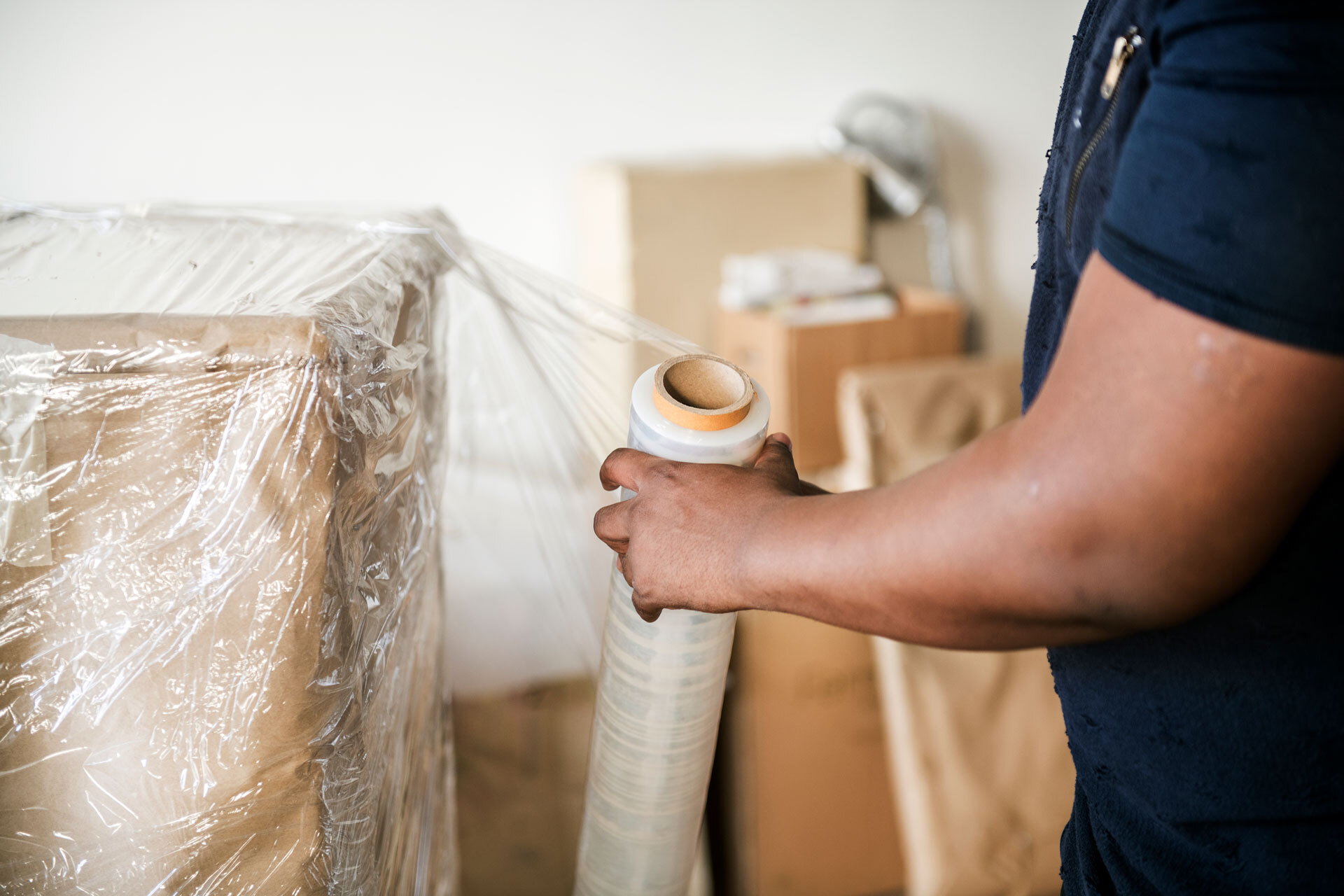There’s no way around it: moving is stressful. Whether you’re moving across town or across the country, packing up all of your belongings is overwhelming and time consuming. In the excitement of buying a new home and the flurry of packing, it’s easy to let small things—like calling the Internet provider to set up the Wi-Fi in your new house—slip your mind.
Though our job as agents is ultimately to help you buy or sell a home, we also want to set you up for success after the big transaction. We’ve created the following to-do list to help make moving as seamless as possible—and to make sure you don’t forget those small-but-important tasks that come with moving into a new home. Here’s the ultimate guide to follow before, during, and after your move.
Before the Move
This section can be summed up in two words: planning and packing.
Make a plan of attack for the move. First things first: how are you going to move? Are you going to hire a moving company? Do you plan to do it yourself with the help of a few friends? Do you need to rent a moving truck or trailer, like a U-Haul? Or will you need something even bigger, like a moving pod?
Once you’ve determined the level of assistance you’re going to need, make a moving budget and start getting quotes. The earlier you start making calls, the better—especially in the spring, when it’s prime moving season and availability may be an issue. If you don’t have a moving company in mind or aren’t sure where to turn, ask your REALTOR® for recommendations.
Stock up on packing materials. We’re talking boxes, bubble wrap, packing tape, and newspaper. Pro tip: though boxes are relatively inexpensive, don’t immediately go out and buy all the boxes you need. First try to source them from friends or family who have moved recently. Local businesses, retailers, and grocery stores are often another great place to check; simply ask if they have boxes that you can take off their hands. Odds are they were going to get rid of them anyway!
Another packing rule of thumb: you can never have enough plain newsprint. It’s perfect for padding the extra space in boxes to keep your items from bumping together or rolling around in the boxes during the move. You can’t go wrong buying some plain newsprint in bulk.
Plan time off for the move. Moving is a full-time job in and of itself. If you can, request time off in advance so you can dedicate a few days entirely to moving. This is especially helpful around moving crunch time, and especially if you’re going to be doing the bulk of it yourself.
Pack. This one’s the biggie. Procrastination is not your friend when it comes to packing. The key here is to pack over time. Start early—maybe even while you’re still house-hunting or before you’ve closed on your new home. You’re going to be moving anyway, so why not get a head start?
The more you spread out your packing, the less daunting the task seems. Pack one box a day, or make a goal to pack three, four, five boxes a week.
Be sure to pack with priority in mind. Start with the nonessentials—those books that are collecting dust on the shelf, the knick-knacks scattered across your home, the decor and wall-hangings, your off-season clothes, and so on. Move on to the essentials the closer you get to the move. Before you know it, you’ll be done.
Pack your essentials box. The last thing you should pack is your “day of move” box. These are the essentials that you’ll need as soon as you get into the new home. This will be the first box you’ll bring into the new home, so keep it close at hand (in other words, don’t pack it away in a moving pod!).
The essentials box should include things like soap, toilet paper, paper towels, toiletries, and towels. It should also include box cutters and scissors. The last thing you want to do is realize you packed away the tools you need to open all of your other boxes!
Get utilities set up and/or transferred. This is another one where calling sooner rather than later pays off, especially during prime moving season when things get busy. Gas, electric, water, Internet, phone, heating/cooling, and waste management are the main utilities to take care of.
Transfer your home insurance to the new place. This one is pretty self-explanatory! Reaching out in advance will give both you and your insurance company time to wrap up your old policy. It also gives you time to start setting up your new policy, or to shop around for a new insurer if you are moving outside the area/state where your current insurer operates.
Start depleting the food in your fridge. You’ll have plenty of stuff to move without having to worry about moving food. While non-perishable items aren’t a huge deal, the food in your fridge can be a hassle to move (and may not even be possible to take with you, depending on how far away you are moving). If possible, avoid stocking up on groceries right before the move. This may mean some weird, hodge-podge meals during the last few days in your old home, based on what’s still left in the fridge. Takeout is also your friend during this time.
Make a plan for kids and pets for the day(s) of the move. Moving is stressful for adults, but it’s stressful in an entirely different sense for kids and pets.
When it comes to kids, experts recommend keeping your daily routine as stable as you can before, during, and after the move. This means regular mealtimes and bedtimes (though this may seem low on the priority list during the flurry of activity). It’s also recommended to involve kids in the move by letting them pack up some of their own belongings, such as a box of stuffed animals. This can help give them a sense of participation and ownership in the move. Lastly, consider letting each kid have their own special tape for their boxes as a treat. In addition to helping you (and the kids) easily identify which boxes are theirs, it adds a bit of fun and personality to the move.
Be sure to plan ahead for your kids for the day of the move. Does a family friend, grandparent, or other family member need to be there to keep the kids occupied and out of the way? Familiar faces can provide comfort during this time.
Also make a plan for your fur kids for the day of the move. Can a friend or family member pet sit? Is there a quiet room in the new house where the pet can be secluded to stay calm and out of the way during the move? Be sure to pack an “essentials” box for pets, too—food and water bowls, food, leashes, a litter box for your feline friends, and a toy or two for comfort and distraction. Pro tip: include an item that smells like you or your pet to make the space seem more familiar—a beloved bed, blanket, or a sweatshirt are all good choices and can help ease the transition.
Have a destination in mind. Furniture is often the biggest hassle to pack and unpack. You can save a lot of time and avoid furniture reshuffling the day of the move if you have a good idea of what furniture you want where in the new home. It can also help you organize and prioritize your packing.
During the Move
Let the heavy lifting begin.
Do a walkthrough of the house while it is completely empty. An empty house is a clean slate and therefore the perfect opportunity to take stock of your new home. Keep an eye out for any touch ups or repairs that are best made before you fill the house with your stuff. For example, is there time for a quick coat of paint? Do the hardwood floors need some TLC? Both of these would be easier to tackle without furniture and boxes in the way.
Unpack the essentials first. To make things seem less chaotic, avoid unpacking willy-nilly. Instead, unpack in reverse order from the way you packed. Start with your essentials box, and then move into the other necessities, like kitchen utensils. Sort boxes into their appropriate “destinations” (rooms) before you unpack them. Let each family member unpack their own bedroom, if possible. Again, this creates a feeling of involvement for the kids.
Use bribery to secure help. Once the essentials have been unpacked, recruit some friends to help you unpack the rest. Most will accept payment in the form of pizza and beer!
Child and pet proof as you go. Start with the room your child or pet will be most active in. If you don’t have time to child and pet proof the whole house at once, consider restricting certain areas that are more “at-risk” or high-traffic with baby gates. Perhaps the most important thing to keep in mind is to never leave dangerous moving tools like box cutters and scissors laying around.
Do a deep clean. In order for your new home to be a clean slate, it needs to be, well, clean. Though the move-in can be overwhelming, it’s also the perfect opportunity to tackle those nooks and crannies you don’t normally think about. We’re talking about cleaning out dryer vents, replacing furnace filters, and giving your air conditioning unit some TLC (note: this last one may require professional help). Don’t forget to look up as you clean, too; this is your chance to confront those dusty ceiling fans and corner spider webs.
Check the carbon monoxide and smoke detectors for batteries. This is one of the first safety checks you should do in your new home. While you should check and replace these batteries twice per year (doing it every Daylight Savings Time is a great way to keep yourself on track), it’s always a good idea to do a double check as soon as you move in.
Tip your movers. If you opted for a professional moving service, don’t forget to tip the workers for all their hard work. Not sure how much to tip? Ask your REALTOR®, or check out this general guide.
After the Move
You may be all moved in, but there are a few last to-dos before you officially begin to nest.
Notify people of your change of address. This may be even more daunting than the move itself. You never realize how many places you give out your address to until you move! Here are a few of the most important places and people to give your new address:
- Immediate friends and family
- Employer
- Bank and loan provider
- Other financial institutions and investment services (i.e. 401K or Roth IRA)
- Social Security (if you receive Social Security or Medicare benefits)
- Lawyer
- DMV/DOT
- Voter registration
- Accountant and tax advisors
- IRS and state tax agencies
- Credit card company
- Payment services (such as PayPal, Venmo, Cash App)
- Insurance
- Car insurance
- Home insurance
- Health insurance
- Dental insurance
- Life insurance
- Healthcare (ex: doctors, dentists, optometrists, etc.)
- Veterinarian
- Online shopping sites you frequent (we recommend deleting your old address out of your Amazon account so you don’t ship things there by accident!)
- Magazines and newspapers
- Any mailing subscription services
- Streaming services (Netflix, Hulu, etc.)
- Any clubs or organizations you belong to (this includes retail clubs like Costco!)
In all reality, your first stop should be the post office to put in a forward from your old address. This is a great safety net so that you don’t miss out on mail from any entities you forgot to provide your new address to. This forward will be active for 12 months and can easily be done online.
Locate your electric box and water shutoff valve. The last thing you want to do is be desperately searching for either of these in a time of need. Take five minutes to find them and commit their location to memory. Make sure you can easily access them (in other words, don’t pile a bunch of boxes in front of it in your basement storage!).
Change the locks. While not 100% necessary, it’s always a good idea to rekey the locks in your new home, just to be sure that you (the new owners!) are the only ones that have access to the home. You never know what other keys to the property may be floating around out there from previous owners. Don’t forget to change any garage and deadbolt codes to a number you can easily remember.
Set up security. Install a home security system if you have one. Many of them are easy to install yourself, or you can call a professional to have a more high-tech one installed.
Get to know the neighbors. If they haven’t already popped over and introduced themselves, extend a friendly hello to your neighbors on all sides. Neighbors can act as a helpful guide, especially when moving to a new and unfamiliar area. You never know who might turn into a friend!
Celebrate! Whether you celebrate by throwing a housewarming party or prefer to relax and take a well-deserved break, it’s time to congratulate yourself on getting through the move successfully. Now you can focus on making this new house your home!
Last but not least, be sure to stay in touch with your REALTOR®. We love to hear how life in the new home is going!
To Wrap Up
Moving is no easy feat, but following this guide will hopefully take a bit of the hecticness and headache out of the equation. We’ll be here to help when you’re ready to find a new home and do it all over again!
Planning to buy or sell your home soon? Get started by chatting with one of our 50+ expert agents today!





